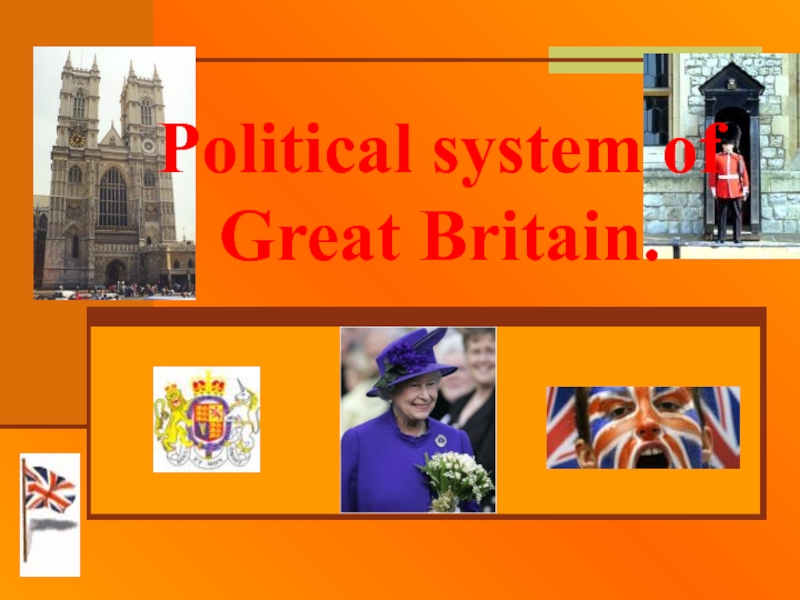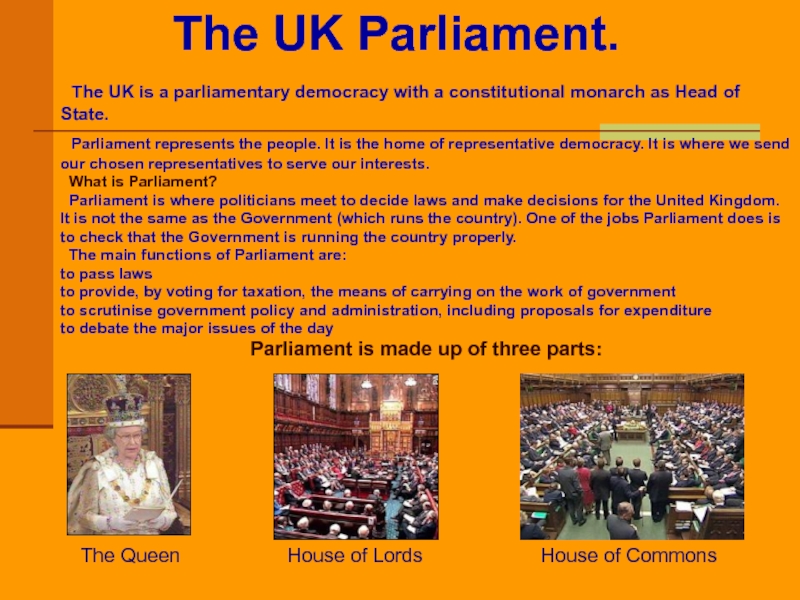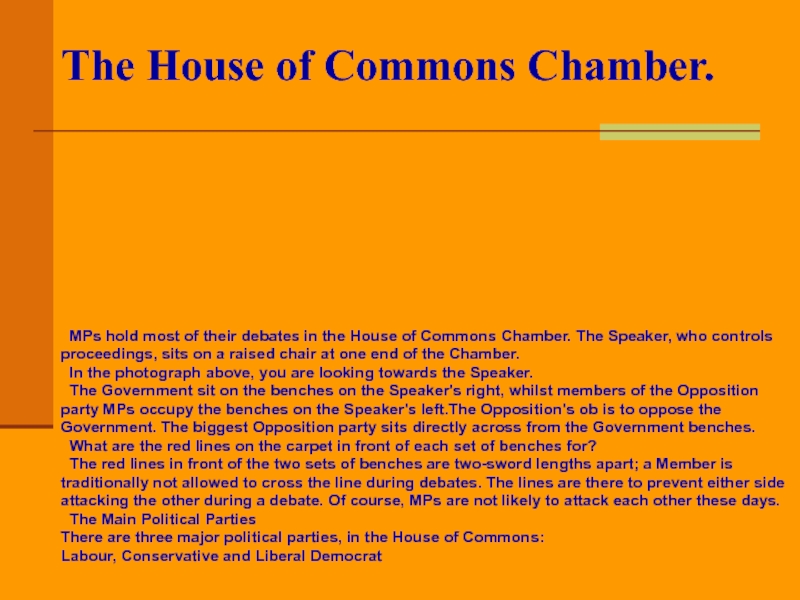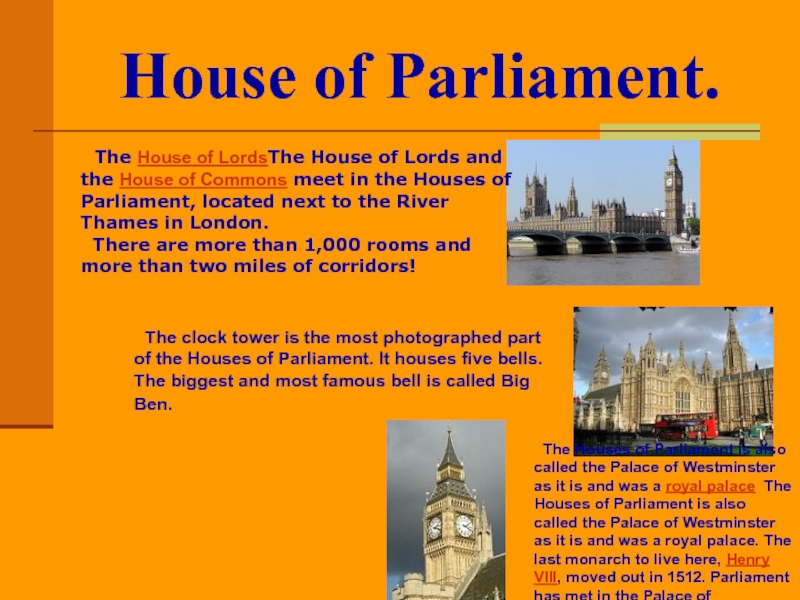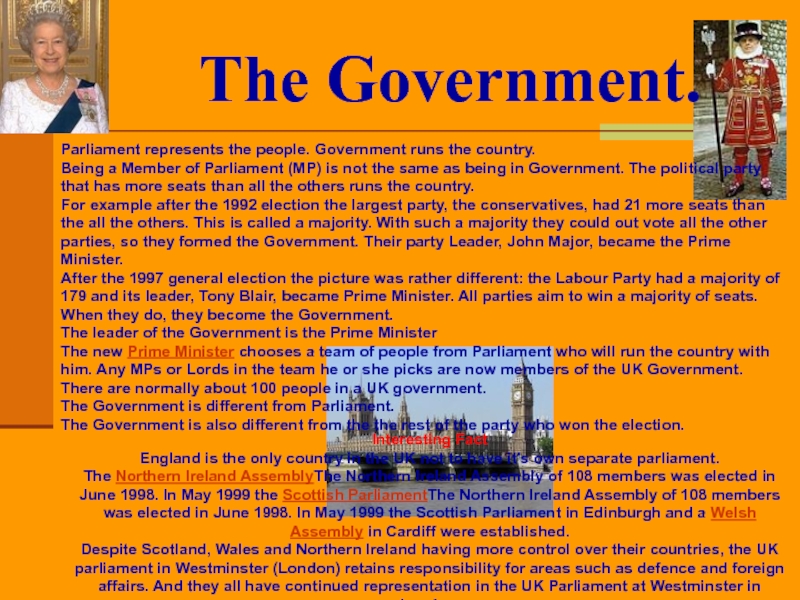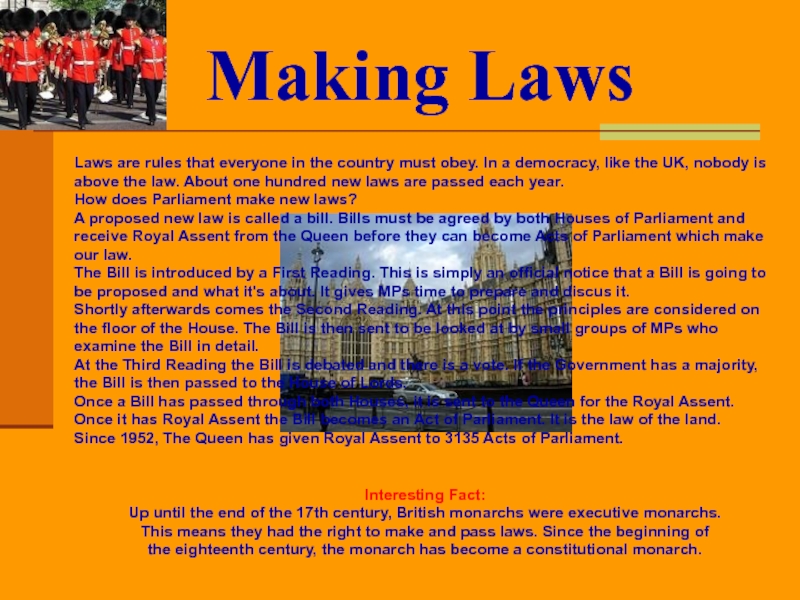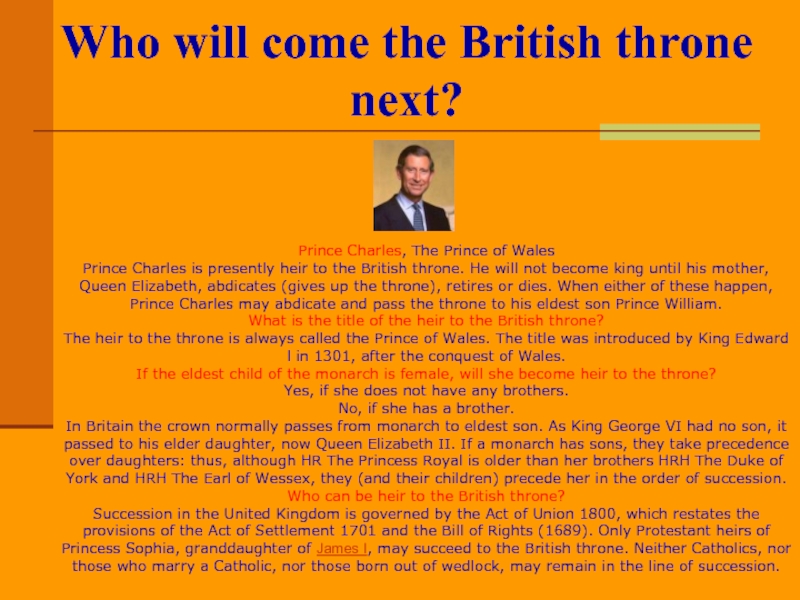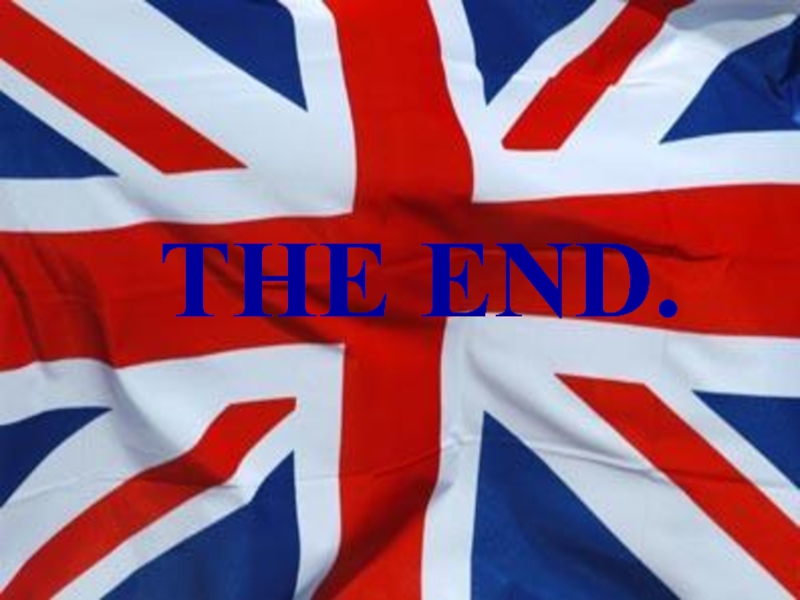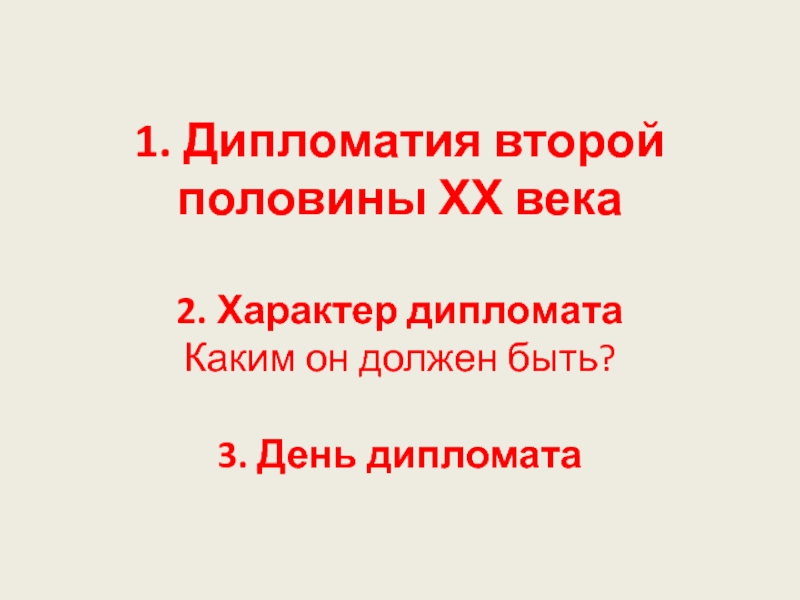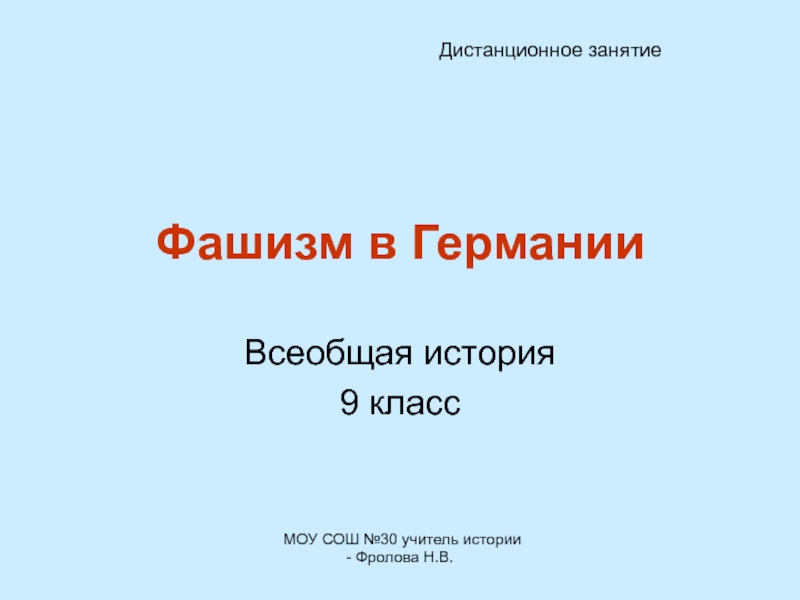- Главная
- Разное
- Дизайн
- Бизнес и предпринимательство
- Аналитика
- Образование
- Развлечения
- Красота и здоровье
- Финансы
- Государство
- Путешествия
- Спорт
- Недвижимость
- Армия
- Графика
- Культурология
- Еда и кулинария
- Лингвистика
- Английский язык
- Астрономия
- Алгебра
- Биология
- География
- Детские презентации
- Информатика
- История
- Литература
- Маркетинг
- Математика
- Медицина
- Менеджмент
- Музыка
- МХК
- Немецкий язык
- ОБЖ
- Обществознание
- Окружающий мир
- Педагогика
- Русский язык
- Технология
- Физика
- Философия
- Химия
- Шаблоны, картинки для презентаций
- Экология
- Экономика
- Юриспруденция
Political system of Great Britain презентация
Содержание
- 1. Political system of Great Britain
- 2. The UK Parliament. The UK is
- 3. The House of Commons Chamber.
- 4. House of Parliament. The House
- 5. The Government. Parliament represents the
- 6. Making Laws Laws are rules that
- 7. The Government Today. The leader of
- 8. Who will come the British throne next?
- 9. THE END.
Слайд 2The UK Parliament.
The UK is a parliamentary democracy with a
Parliament represents the people. It is the home of representative democracy. It is where we send our chosen representatives to serve our interests.
What is Parliament?
Parliament is where politicians meet to decide laws and make decisions for the United Kingdom. It is not the same as the Government (which runs the country). One of the jobs Parliament does is to check that the Government is running the country properly.
The main functions of Parliament are:
to pass laws
to provide, by voting for taxation, the means of carrying on the work of government
to scrutinise government policy and administration, including proposals for expenditure
to debate the major issues of the day
Parliament is made up of three parts:
The Queen
House of Lords
House of Commons
Слайд 3The House of Commons Chamber.
MPs hold most of their debates in the House of Commons Chamber. The Speaker, who controls proceedings, sits on a raised chair at one end of the Chamber.
In the photograph above, you are looking towards the Speaker.
The Government sit on the benches on the Speaker's right, whilst members of the Opposition party MPs occupy the benches on the Speaker's left.The Opposition's ob is to oppose the Government. The biggest Opposition party sits directly across from the Government benches.
What are the red lines on the carpet in front of each set of benches for?
The red lines in front of the two sets of benches are two-sword lengths apart; a Member is traditionally not allowed to cross the line during debates. The lines are there to prevent either side attacking the other during a debate. Of course, MPs are not likely to attack each other these days.
The Main Political Parties
There are three major political parties, in the House of Commons:
Labour, Conservative and Liberal Democrat
Слайд 4House of Parliament.
The House of LordsThe House of Lords and
There are more than 1,000 rooms and more than two miles of corridors!
The clock tower is the most photographed part of the Houses of Parliament. It houses five bells. The biggest and most famous bell is called Big Ben.
The Houses of Parliament is also called the Palace of Westminster as it is and was a royal palace The Houses of Parliament is also called the Palace of Westminster as it is and was a royal palace. The last monarch to live here, Henry VIII, moved out in 1512. Parliament has met in the Palace of Westminster since around 1550.
Слайд 5 The Government.
Parliament represents the people. Government runs the country.
Being a Member of Parliament (MP) is not the same as being in Government. The political party that has more seats than all the others runs the country.
For example after the 1992 election the largest party, the conservatives, had 21 more seats than the all the others. This is called a majority. With such a majority they could out vote all the other parties, so they formed the Government. Their party Leader, John Major, became the Prime Minister.
After the 1997 general election the picture was rather different: the Labour Party had a majority of 179 and its leader, Tony Blair, became Prime Minister. All parties aim to win a majority of seats. When they do, they become the Government.
The leader of the Government is the Prime Minister The new Prime Minister chooses a team of people from Parliament who will run the country with him. Any MPs or Lords in the team he or she picks are now members of the UK Government.
There are normally about 100 people in a UK government.
The Government is different from Parliament.
The Government is also different from the the rest of the party who won the election.
Interesting Fact
England is the only country in the UK not to have it's own separate parliament.
The Northern Ireland AssemblyThe Northern Ireland Assembly of 108 members was elected in June 1998. In May 1999 the Scottish ParliamentThe Northern Ireland Assembly of 108 members was elected in June 1998. In May 1999 the Scottish Parliament in Edinburgh and a Welsh Assembly in Cardiff were established.
Despite Scotland, Wales and Northern Ireland having more control over their countries, the UK parliament in Westminster (London) retains responsibility for areas such as defence and foreign affairs. And they all have continued representation in the UK Parliament at Westminster in London.
Слайд 6Making Laws
Laws are rules that everyone in the country must
How does Parliament make new laws?
A proposed new law is called a bill. Bills must be agreed by both Houses of Parliament and receive Royal Assent from the Queen before they can become Acts of Parliament which make our law.
The Bill is introduced by a First Reading. This is simply an official notice that a Bill is going to be proposed and what it's about. It gives MPs time to prepare and discus it.
Shortly afterwards comes the Second Reading. At this point the principles are considered on the floor of the House. The Bill is then sent to be looked at by small groups of MPs who examine the Bill in detail.
At the Third Reading the Bill is debated and there is a vote. If the Government has a majority, the Bill is then passed to the House of Lords.
Once a Bill has passed through both Houses, it is sent to the Queen for the Royal Assent. Once it has Royal Assent the Bill becomes an Act of Parliament. It is the law of the land.
Since 1952, The Queen has given Royal Assent to 3135 Acts of Parliament.
Interesting Fact:
Up until the end of the 17th century, British monarchs were executive monarchs. This means they had the right to make and pass laws. Since the beginning of the eighteenth century, the monarch has become a constitutional monarch.
Слайд 7The Government Today.
The leader of the political party with the
In the 2005 General Election, Labour won 356 seats (for their Ministers of Parliament), Conservatives 198 seats and Liberal Democrats 62. As the Labour Party won the most seats, its leader, Tony Blair, was asked to form the government.
Who is the Prime Minister?
The leader of the party in power becomes the Prime Minister. At present, the Prime Minister is Gordon Brown, who is also the leader of the Labour Party (as from 27 June 2007).
The Labour Party won an overall majority in the last two General Elections. Parliamentary elections are held once every five years, or less.
Every week the Prime Minister appears before the House of Commons and must answer questions put to him or her by the members of Parliament.
The Prime Minister heads the Government and appoints Ministers, who head individual Government departments. The most important ministers are called Secretaries of State, and they are in charge of a Government Department (a ministry). Each minister is responsible for his department, and makes sure that his department applies the policy of the government.
Where does the Prime Minister live?
Traditionally, the official residence of the Prime Minister is at Number 10 Downing Street. He also has a house in the country called Chequers.
The most important Secretaries of State are:
The Chancellor of the Exchequer (finance)
The Foreign Secretary (international affairs)
The Home Secretary (internal affairs)
The Lord Chancellor (the legal system)
The Secretary of State for Education.
The Secretary of State for Transport and the Environment.
Слайд 8Who will come the British throne next?
Prince Charles, The Prince
Prince Charles is presently heir to the British throne. He will not become king until his mother, Queen Elizabeth, abdicates (gives up the throne), retires or dies. When either of these happen, Prince Charles may abdicate and pass the throne to his eldest son Prince William.
What is the title of the heir to the British throne?
The heir to the throne is always called the Prince of Wales. The title was introduced by King Edward l in 1301, after the conquest of Wales.
If the eldest child of the monarch is female, will she become heir to the throne?
Yes, if she does not have any brothers.
No, if she has a brother.
In Britain the crown normally passes from monarch to eldest son. As King George VI had no son, it passed to his elder daughter, now Queen Elizabeth II. If a monarch has sons, they take precedence over daughters: thus, although HR The Princess Royal is older than her brothers HRH The Duke of York and HRH The Earl of Wessex, they (and their children) precede her in the order of succession.
Who can be heir to the British throne?
Succession in the United Kingdom is governed by the Act of Union 1800, which restates the provisions of the Act of Settlement 1701 and the Bill of Rights (1689). Only Protestant heirs of Princess Sophia, granddaughter of James I, may succeed to the British throne. Neither Catholics, nor those who marry a Catholic, nor those born out of wedlock, may remain in the line of succession.
